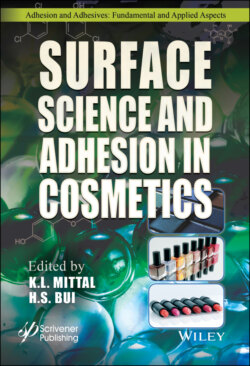Читать книгу Surface Science and Adhesion in Cosmetics - Группа авторов - Страница 82
3.9 Adhesion of UV Nail Gel to the Human Nail Plate
ОглавлениеAdhesion is another area of concern for the application of UV nail gel polish. In one aspect the user wants high adhesion for 2-4 weeks when subjected to dish washing detergents, hand cleaners, hand creams and a whole host of other chemicals that will cause the UV nail gel to lose adhesion. On the other hand, the user wants the UV cured coating to be removed quickly when fashion changes require it. Testing was accomplished by doing soak-off (in solution of 95% acetone and 5% water) that was performed for 72 hours and the results can be seen in Figure 3.18.
Figure 3.18 Correlation of gel fraction data (after 72 hours of soak-off) of the compositions with the adhesion loss time from the substrate in a solvent medium (95% acetone and 5% water).
The results correlated with the GF data obtained after the 72-hour of soak-off. The researchers found that the formulation containing the 30% THFA showed the quickest adhesion loss in 3 minutes. This result of the 30% THFA also correlates with the smallest GF value [21].
A very recent US Patent issued [22] teaches this new technique for improved adhesion to the human nail. As can be seen in Table 3.8 the improvement over the control shows that the addition to the base UV nail gel formulation of the polyhedral oligomeric silsesquioxane (POSS) increased the adhesion from 71% to 125%. The adhesion test was performed utilizing the Cross-Hatch Adhesion Test according to ASTM D3359 [22].
Table 3.8 Improved adhesion to the human nail using a UV curable nail gel formulation with the addition of polyhedral oligomeric silsesquioxane (POSS). Testing was performed using ASTM D3359 Cross-Hatch Adhesion Test.
| Formulation # | Average adhesion score | Improvement over Control |
| 1 | 3.0 | 71% |
| 1 Control | 1.75 | – |
| 2 | 2.25 | 125 |
| 2 Control | 1.0 | – |
